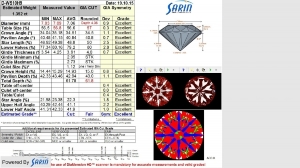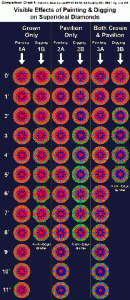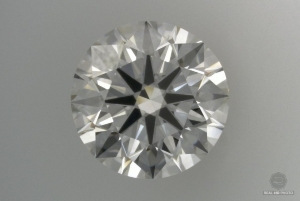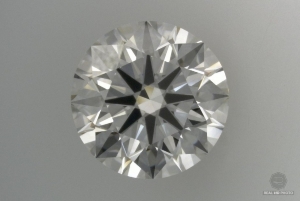just_browsing
Rough_Rock
- Joined
- Aug 26, 2015
- Messages
- 29
I finally got my SARIN and light trace reports back for my 1.35ct IF H diamond, and the thing that jumped out at me was the estimated GIA cut grade of FAIR. The actual GIA report graded the cut as EXCELLENT. I know the GIA excellent range is already pretty wide, but could this diamond have been significantly overgraded even by GIA's own standards?
http://www.gia.edu/cs/Satellite?pag...&c=Page&cid=1355954554547&reportno=7201537694
The fine print in the SARIN report notes "Cut grade deduction due to brillianteering." I've read the past articles on painting and digging, and the girdle profile on the report does seem to indicate some brillianteering issues. However, the light trace image looks great and I do not notice any girdle issues from the video, so maybe it should not be a huge concern. I've been skeptical of this diamond because it seems to be a great value ($7850) for its specs.
It would seem odd to utilize painting or digging on a diamond of this size. Could the girdle profile simply indicate a diamond that was not precisely cut even though it received a GIA Triple Ex? Also I would only expect a difference in one cut grade and not a deduction from excellent to fair.

http://www.gia.edu/cs/Satellite?pag...&c=Page&cid=1355954554547&reportno=7201537694
The fine print in the SARIN report notes "Cut grade deduction due to brillianteering." I've read the past articles on painting and digging, and the girdle profile on the report does seem to indicate some brillianteering issues. However, the light trace image looks great and I do not notice any girdle issues from the video, so maybe it should not be a huge concern. I've been skeptical of this diamond because it seems to be a great value ($7850) for its specs.
It would seem odd to utilize painting or digging on a diamond of this size. Could the girdle profile simply indicate a diamond that was not precisely cut even though it received a GIA Triple Ex? Also I would only expect a difference in one cut grade and not a deduction from excellent to fair.







300x240.png)